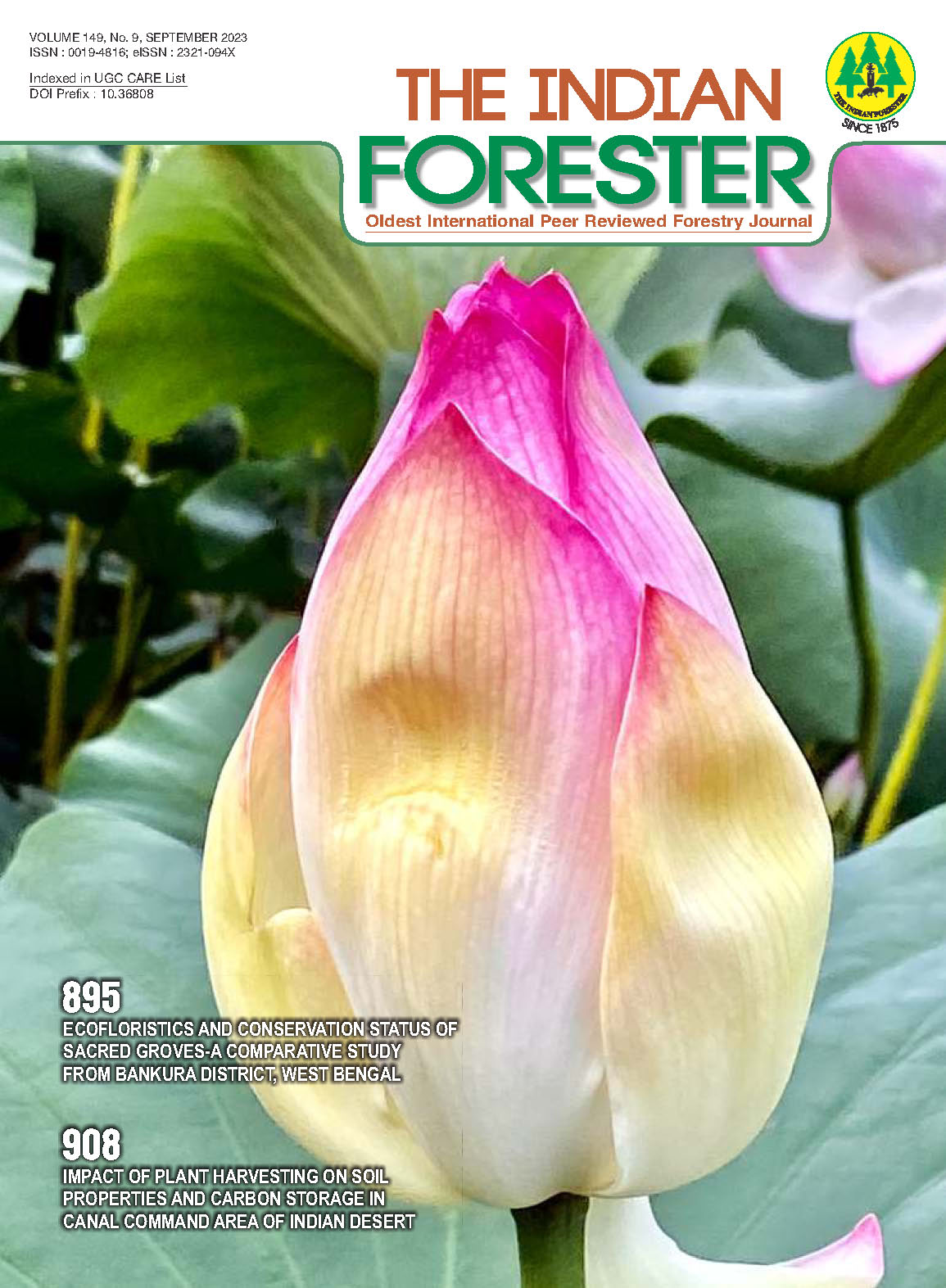Prinsepia utilis Royle: An Unexplored Treasure for the Livelihood Enhancement in Himalaya Hills
DOI:
https://doi.org/10.36808/if/2023/v149i9/157762Keywords:
Bhekal, Indigenous Knowledge, Jaunsar-Bhawar, Seed Oil, Medical Plant.Abstract
Prinsepia utilis Royle, commonly known as Bhekal, Bekhal or Bekoi, is a moderate-sized perennial woody shrub frequently occurring throughout the Himalaya hills in altitudes of 1000 to 3000 m asl. To conduct the scientific study and documentation of the indigenous traditional knowledge related to P. utilis Royle are the main objective of this study. Several ethnobotanical surveys were carried out from July 2016 to June 2018 to achieve this goal. The study revealed several traditional usages as a potential source of edible oil, fuel, fodder and medicines and in many ritualistic practices. Despite the extraordinary potential benefits of P. utilis in the socio-economics of people of this region, the diminished interests in its utilisation have led to poor conservation and depletion of its genetic resources. Owing to its multi-purpose benefits and usages, it can be a highly promising plant for the upliftment of the socio-economic status of the native peoples living in Jaunsar-Bawar region of the Himalaya. The underutilized tremendous economic potential of this plant can be harnessed by encouraging commercial cultivation of P. utilis for its oilseeds. The businesses related to oilseed collection, processing and oil extraction can flourish and improve the socioeconomic status of this region. To maintain this knowledge, comprehensive approach and collaboration are needed to maintain historical records on traditional knowledge in favour of human beings, before they are destroyed forever. Therefore, a summary of the taxonomy, the contemporary traditional use of the plant/ plant parts and products, based on field survey from Chakrata, Uttarakhand has been documented in this paper.References
Bisht D.S. and Pundir Y>P>S. (2014). Wild Medicinal Plants of Jaunsar-bawar Western Himalaya, Uttarakhand. indian Forester, 140(12): 1202-1212.
Kandari L.S. (2005). Eco-Physiological and socio-economic studies of some rhizomatous medicinal and aromatic plants species (Doctorial dissertation, Ph. D. Thesis. NHB Garhwal University, Srinagar (Garhwal), India).
Kumar A., Aswal S., Chauhan A., Semwal R.B., Kumar A. and Semwal D. K., (2019). Ethnomedicinal investigation of medicinal plants of Chakrata region (Uttarkhand) used in the traditional medicine for diabetes by Jaunsari tribe. Natural products and bioprospecting, 9(3): 175-200.
Kumar M., Harsh N.S.K., Prasad R. and Pandey V>V. (2017). An ethnomycological survey of Jaunsar, Chakrata, Dehradun, India. Journal of Threatened Taxa, 9(9): 10717-10725.
Maikhuri R. K., Nautiyal S., Rao K.S. and Saxena, K.G. (1998). Medicinal plant cultivation and biosphere reserve management: a case study from the Nanda Devi Biosphere Reserve, Himalaya. Current Science, 157-163.
Maikhuri R.K., Singh A., and Semwal R.L. (1994). Prinsepia utilis Royle: a wild, edible oil shrub of the higher Himalayas. Plant Genet. Resources Newslett., 98: 5-8.
Nautiyal M., Tiwari P., Tiwari J>K. and Rawa D>S> (2018)(. Fodder diversity, availability and utilization pattern in Garhwal Himalaya, Uttarkhand. Plant Archives, 18(1): 279-287.
Pardo-de-Santayana M., Tardio J., Heinrich M., Touwaide A. and Morales R. (2006). Plants in the works of Cervantes. Economic Botany, 60(2): 59-181.
Phondani P.C., Maikhuri R.K. and Kala C.P. (2010). Ethnoveterinary uses of medicinal plants among traditional herbal healers in Alaknanda catchment of Uttarkhand, India. African Journal of Traditional, Complementary and Alternative Medicines, 7(3):195-206.
Pundir Y.P.S. and Singh D. (1997). Wild edible food plants of Jaunsar-Bawar-II. The Honey Sucking Plants-I. The World Weeds, 4(3&4): 227-331.
Rana T.S. and Datt B. (1997). Ethnobotanical observation among Jaunsaris of Jaunsar-Bawar, Dehra Dun (UP), India. International journal of pharmacognosy, 35(5): 371-374.
Census (2011): https://www.censusindia.co.in/subdistrict/chakrata-tehsil-dehradun-uttarakhand-300
Downloads
Downloads
Published
How to Cite
Issue
Section
License
Unless otherwise stated, copyright or similar rights in all materials presented on the site, including graphical images, are owned by Indian Forester.





